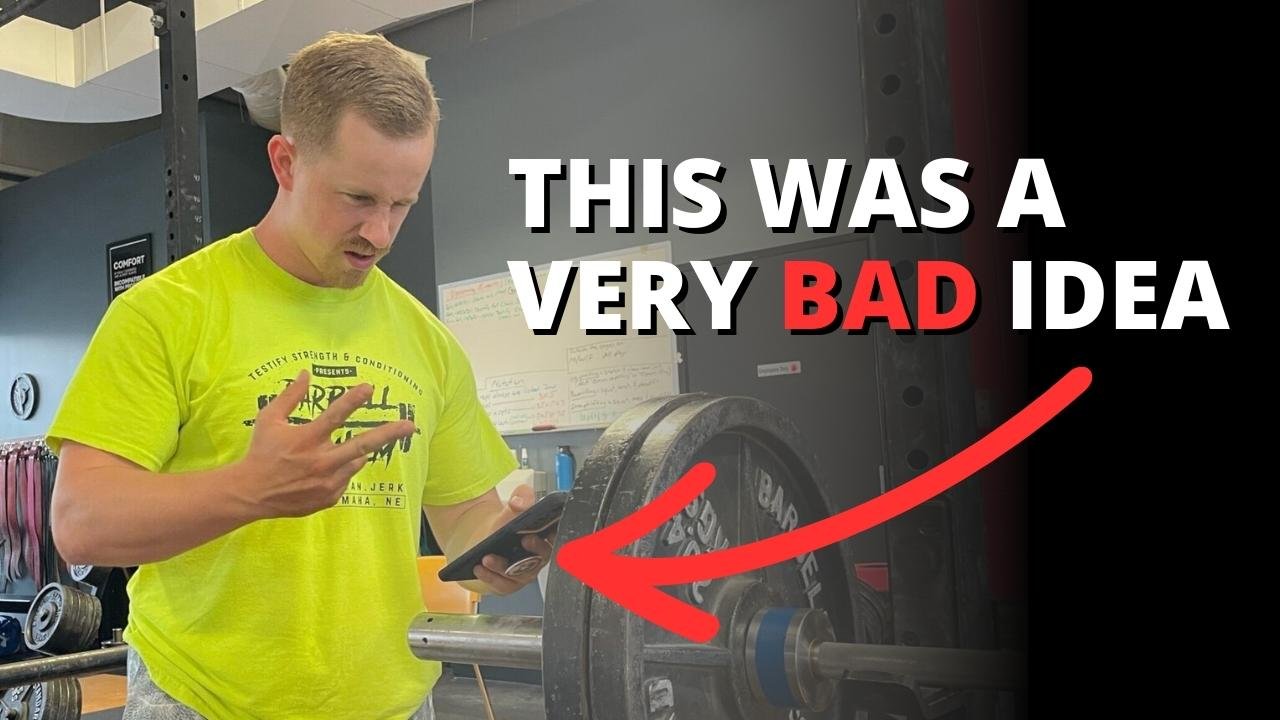Bar Math: Stop Doing This!
/(This is a Blast from the Past article originally posted on 10/01/21.)
Bar math can be tricky, and if you’re a new lifter (or even an experienced one!), you might find that simply loading the correct weight on the bar is one of the more difficult aspects of your training experience. Let’s solve this (if you like, you can just scroll to the end of this article and watch the video instead!).
First - what not to do. Do NOT use the “subtract-and-divide” (SAD) method to figure out your bar math. Here’s an example - we want 110 lb on the bar (i.e., 110 lb total - including the bar’s weight), so we subtract the 45 lb bar from 110 lb, and we get 65 lb left over. We then divide 65 by 2 since we have to split that 65 lb between each side of the barbell to get 32.5 lb, and now we need to figure out how to load 32.5 lb on each side.
Again - do NOT do this. Mathematically, yes, it makes sense, but in the long run, it’s neither the easiest nor the quickest way to go about this process. We’ve seen people break out calculators to do this, and we’ve even seen people working some long division to accomplish this process, but no matter what tools you have at your disposal, SAD isn’t very practical, and it’s rather error prone as well.
The best method is to simply load the largest possible plate (without going over your target weight) that you can every single time. Your brain works decently with subtraction and division, but it works quite a bit better with addition and multiplication, and this “largest possible plate” (LPP) method takes advantage of this fact. An additional advantage to this method is that you’ll start to memorize some “milestone weights” or “landmark weights” along the way (this will happen whether you mean to do so or not!), and this is extremely useful.
Let’s run through the 110 lb example again - this time using LPP. (Warning - this looks bad on paper, but it’s far easier in practice.)
Can I add a 45 lb plate (on each side)? 45 x 2 = 90, and adding 90 lb to the bar is too much, so no, I can’t. Move on.
Can I add a 25? 25 x 2 = 50, and 50 + 45 (bar’s weight) = 95, so yes, I can.
By the way, 95 lb is one of those landmark weights you’ll eventually have memorized, which is very useful as you’ll build upon that for other weights.
Now we’re at 95 lb. Can I add a 10? 10 x 2 = 20, and 20 + 95 = 115, and that’s too much, so no, I can’t add a 10. Move on.
We’re still at 95 lb. Can I add a 5? 5 x 2 = 10, and 10 + 95 = 105, so yes, I can.
Now we’re at 105 lb, and I’m close enough to 110 that I realize that I need 5 more lb total, so I simply add a 2.5 lb plate to each side, and I’m done. (Technically, there’s a little “subtract-and-divide” going on here at the end, but I get to do it with very small numbers, which is nice.)
To recap:
Adding 25s (i.e., one to each side) takes us to 95 lb (in total weight).
Adding 5s takes us to 105 lb.
Adding 2.5s takes us to 110 lb.
This is actually far simpler in practice than it looks on paper, but you’ll have to try it out to believe me. Again, all you need to do is put the largest possible plate on every single time without actually going above the weight that you’re trying to reach.
By doing this repeatedly as you train each day, you’ll eventually know that 25-lb plates take you to 95 lb, 45-lb plates take you to 135 lb, etc., and this type of accidental memorization speeds up the process even more. In the long run, if you force yourself to keep doing your bar math in this manner, you’ll be a faster and more accurate “bar mathematician” than if you stuck with the ol’ SAD method.
Feel free to check out our video on this topic, and as always, we hope this helps you get stronger and live better!
(Some links may be affiliate links. As an Amazon Associate, Testify earns from qualifying purchases.)
